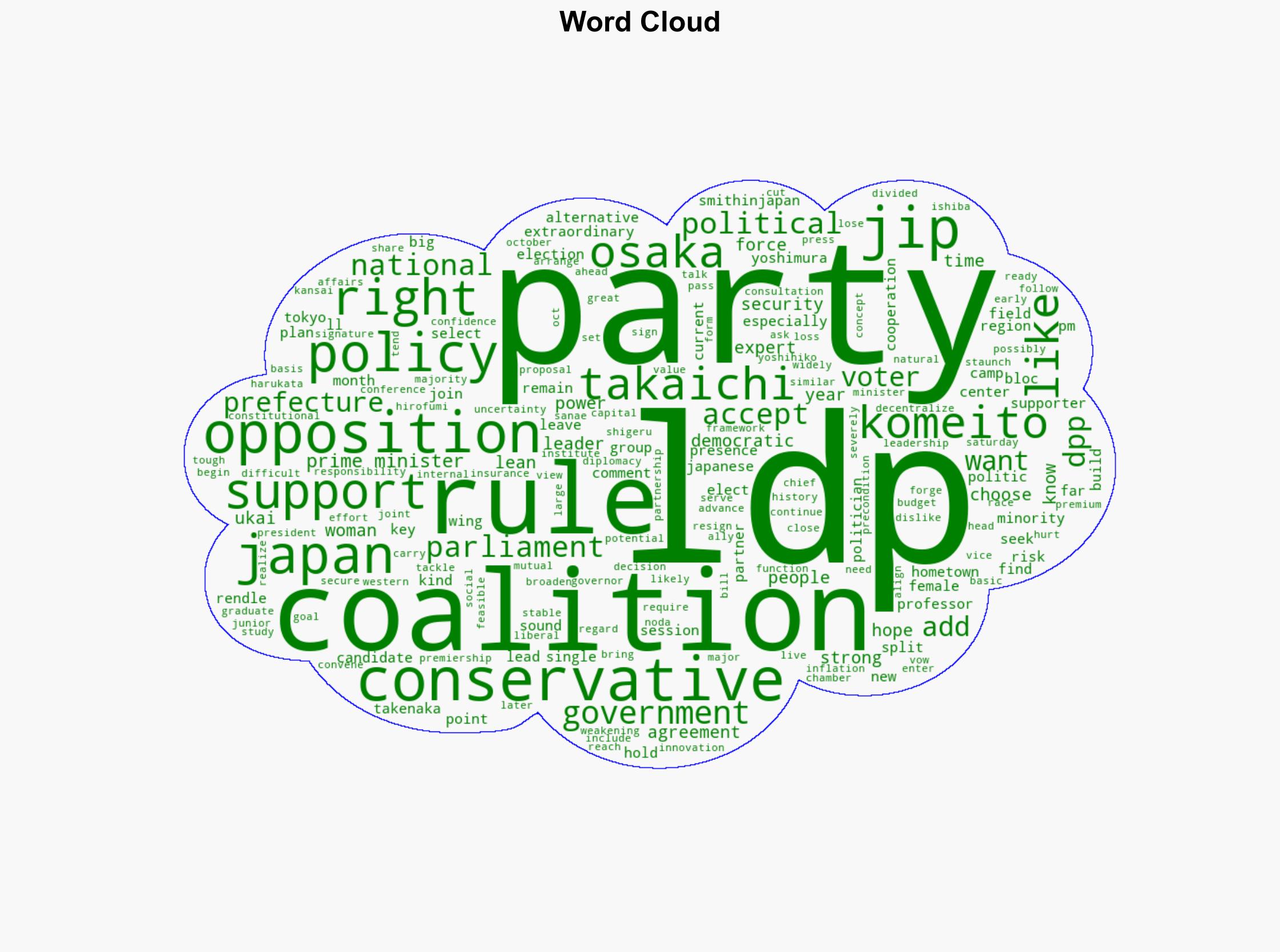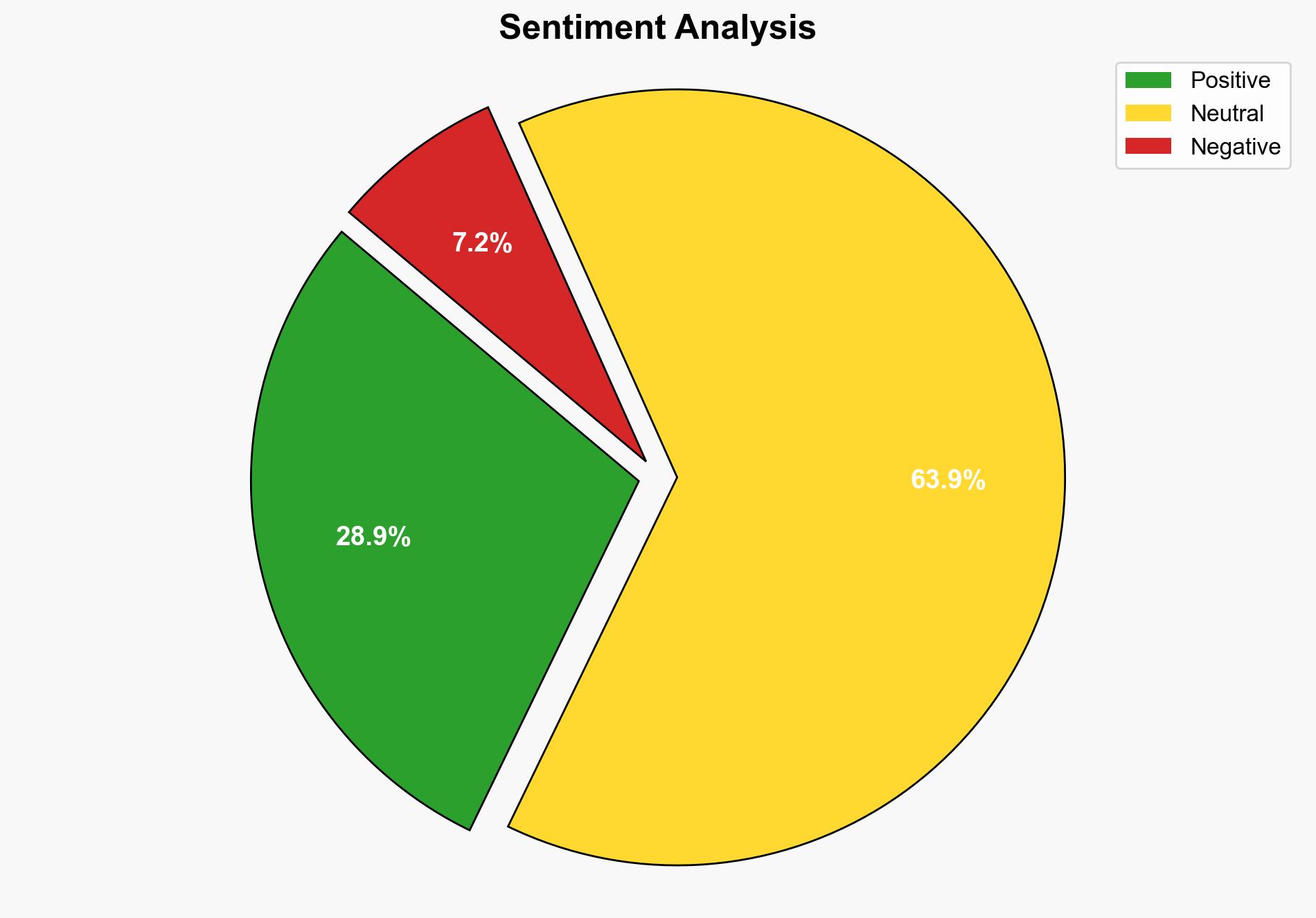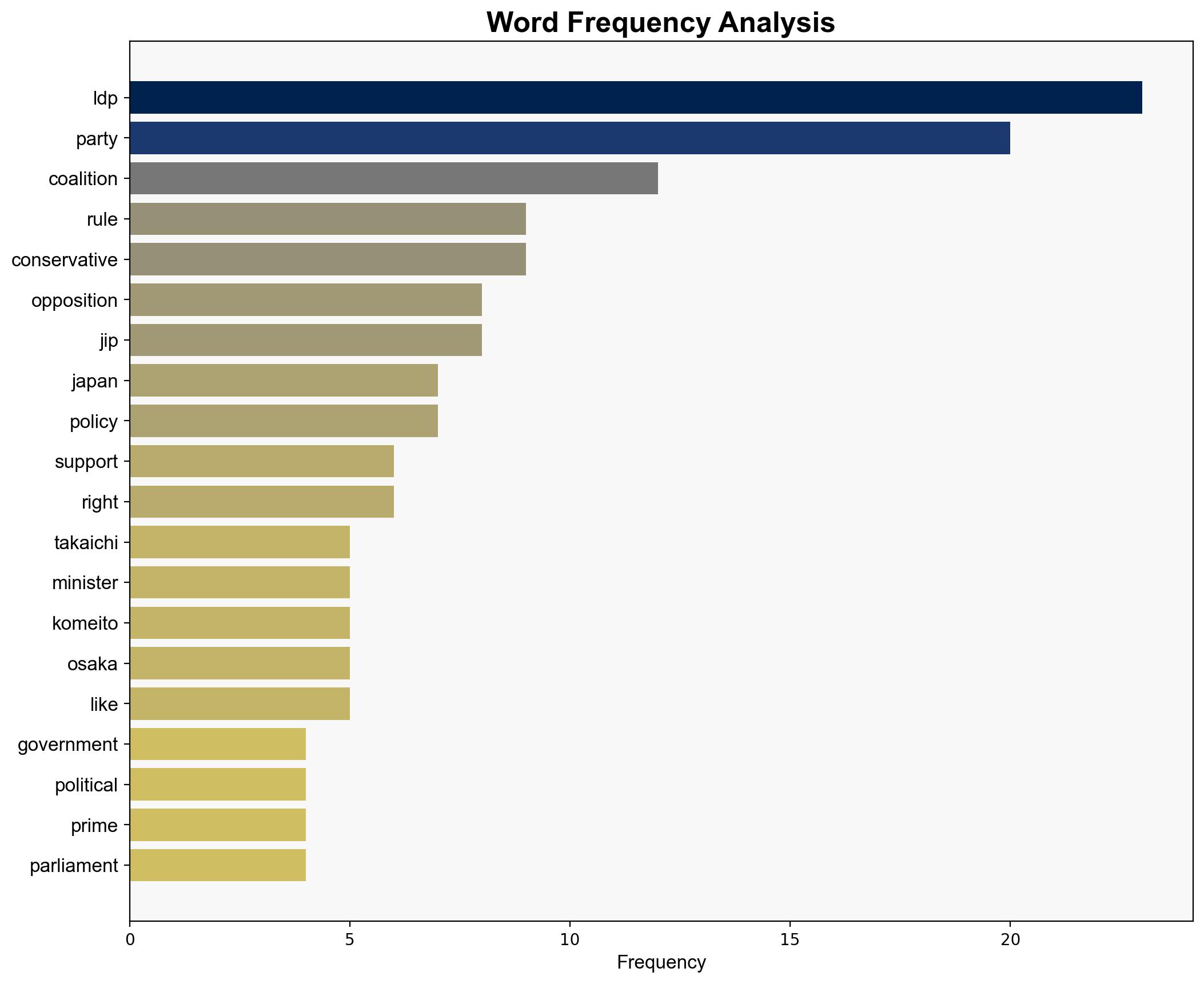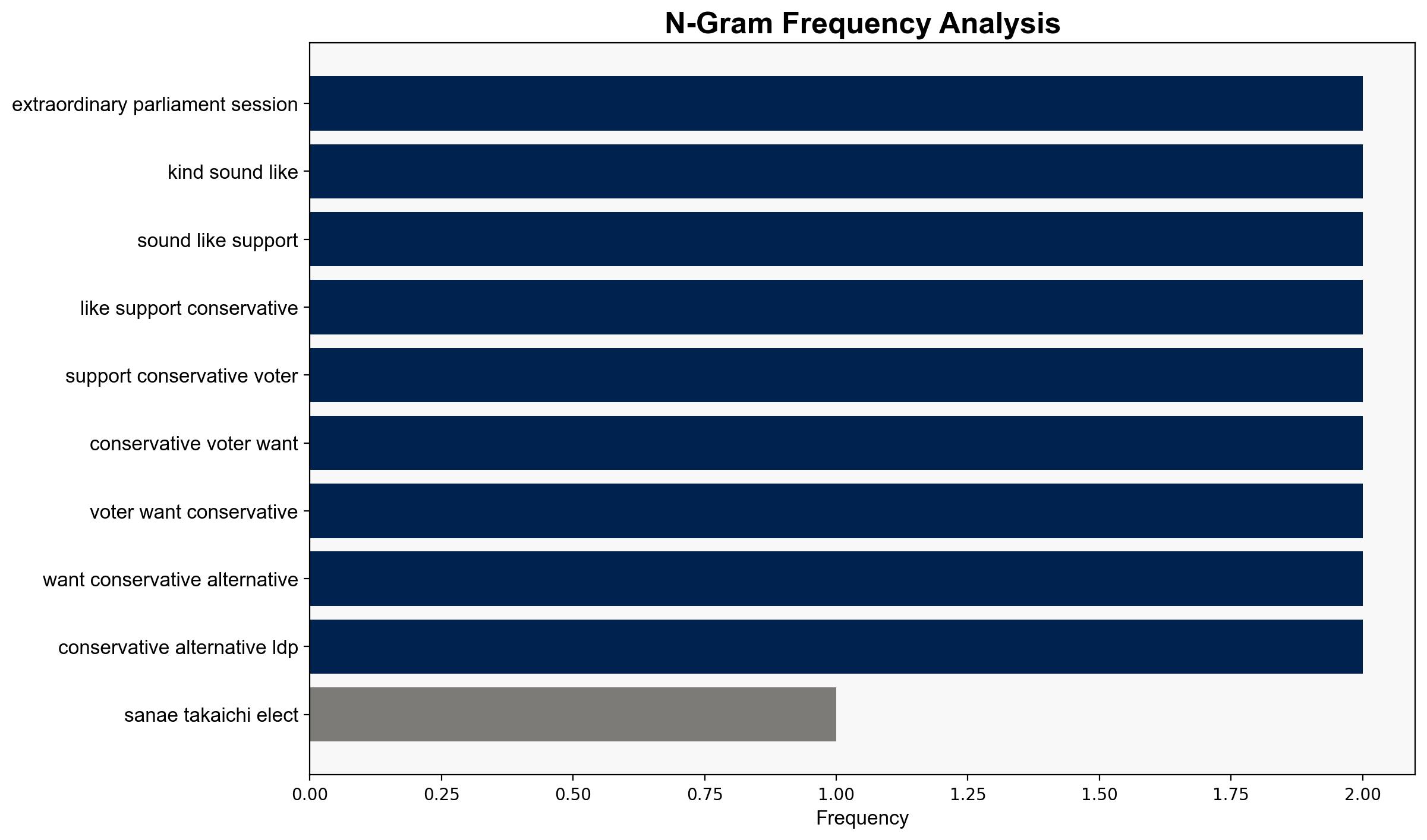Takaichi faces challenge of bringing opposition into ruling bloc – Japan Today
Published on: 2025-10-05
Intelligence Report: Takaichi faces challenge of bringing opposition into ruling bloc – Japan Today
1. BLUF (Bottom Line Up Front)
Sanae Takaichi’s effort to broaden the ruling coalition by integrating opposition parties faces significant challenges. The most supported hypothesis suggests that while initial cooperation may be achieved, sustaining a stable coalition is unlikely due to ideological differences and political risks. Confidence level: Moderate. Recommended action: Focus on strengthening existing alliances and cautiously exploring new partnerships with clear policy alignments.
2. Competing Hypotheses
1. **Hypothesis A**: Takaichi successfully integrates opposition parties into the ruling coalition, leading to a more stable government.
– **Supporting Evidence**: Potential partners like the Japan Innovation Party (JIP) and Democratic Party for the People (DPP) share conservative values with the Liberal Democratic Party (LDP).
– **Contradictory Evidence**: Historical reluctance of opposition parties to join ruling coalitions due to ideological differences and risk of losing support.
2. **Hypothesis B**: Takaichi’s efforts to integrate opposition parties fail, resulting in continued political instability.
– **Supporting Evidence**: The presence of Komeito, a traditionally pacifist party, complicates coalition-building with right-leaning parties. Opposition parties risk losing their support base by aligning with the LDP.
– **Contradictory Evidence**: Some opposition parties may be motivated by policy alignment on key issues like decentralization and social insurance reforms.
3. Key Assumptions and Red Flags
– **Assumptions**: It is assumed that opposition parties are primarily motivated by policy alignment rather than political strategy. The LDP’s ability to negotiate effectively with diverse parties is also assumed.
– **Red Flags**: The potential for ideological conflicts, especially with Komeito’s pacifist stance, and the risk of opposition parties losing their support base.
– **Blind Spots**: The impact of public opinion and grassroots movements on coalition dynamics is not fully considered.
4. Implications and Strategic Risks
– **Political**: Failure to form a stable coalition could lead to legislative gridlock and weaken Japan’s governance.
– **Economic**: Uncertainty in government stability may affect investor confidence and economic policy implementation.
– **Geopolitical**: A weakened Japanese government could impact regional security dynamics, particularly in relation to China and North Korea.
5. Recommendations and Outlook
- **Mitigate Risks**: Strengthen existing alliances with Komeito and focus on policy areas with broad support to minimize ideological conflicts.
- **Exploit Opportunities**: Engage in dialogue with potential partners like JIP and DPP on shared policy goals to build trust and explore coalition possibilities.
- **Scenario Projections**:
– **Best Case**: Successful coalition formation leading to a stable government and effective policy implementation.
– **Worst Case**: Failed coalition efforts resulting in political instability and legislative gridlock.
– **Most Likely**: Partial cooperation with select opposition parties, leading to a fragile coalition with limited policy success.
6. Key Individuals and Entities
– Sanae Takaichi
– Yoshihiko Noda
– Hirofumi Yoshimura
– Harukata Takenaka
– Takefumi Ukai
7. Thematic Tags
political stability, coalition dynamics, Japan, governance, regional security





